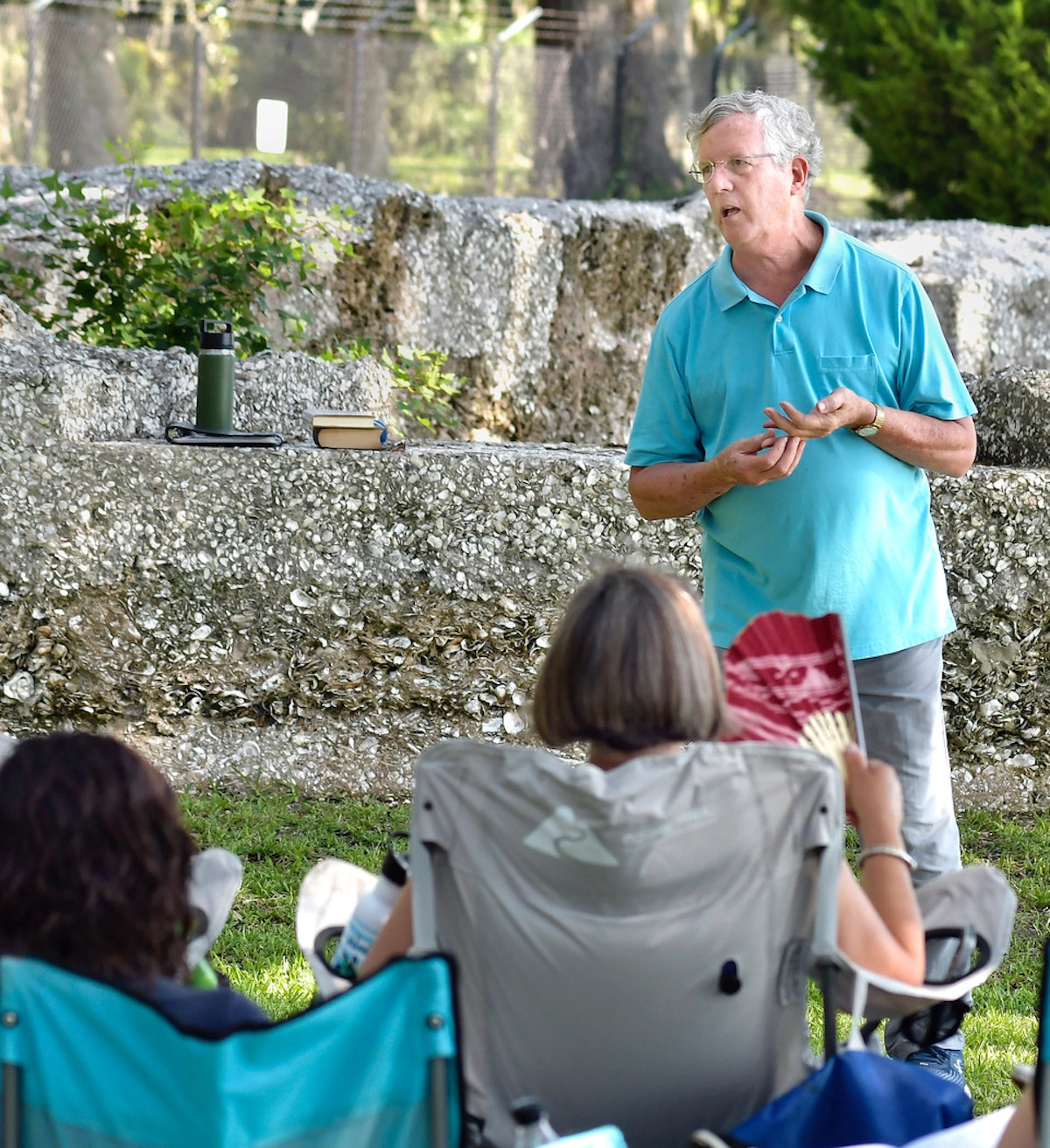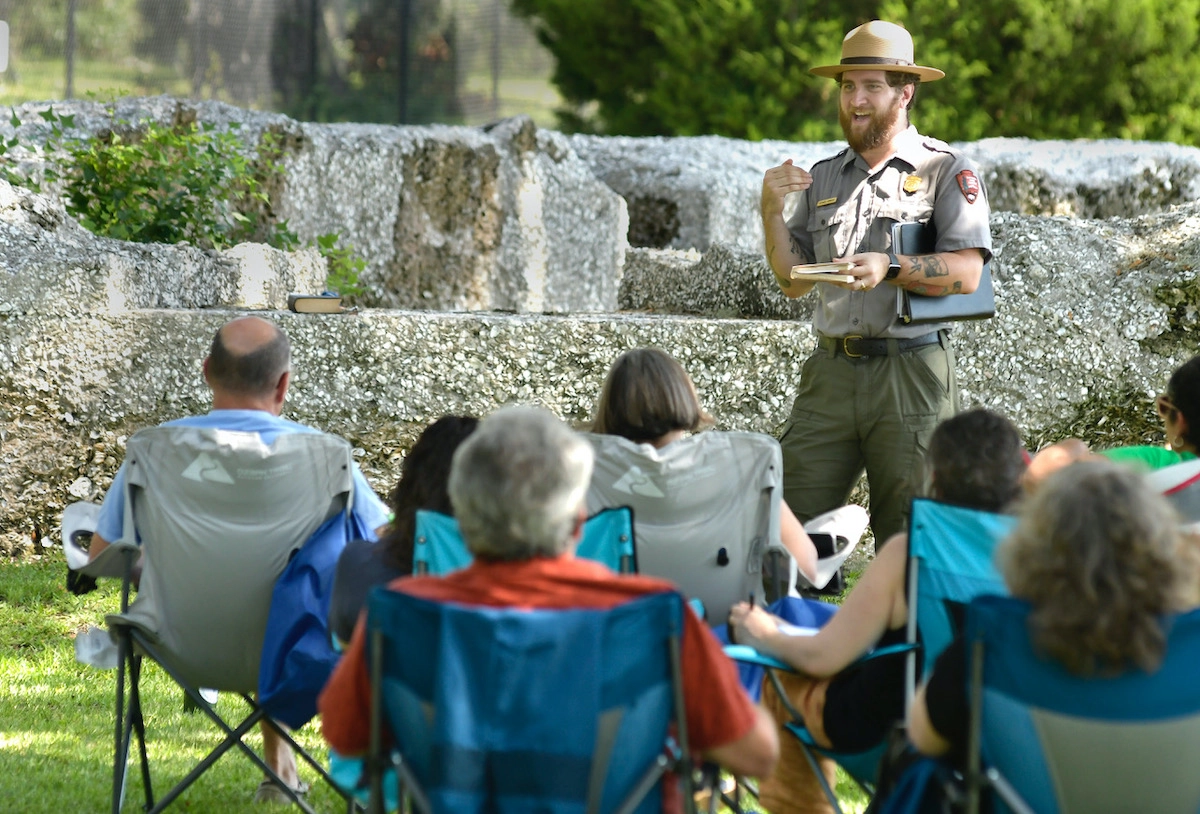The Island News
More than two dozen people braved the heat and the ever-present mosquitoes to learn about the June 10, 1863 raid on Willtown Bluff Plantation, involving the 1st S.C. Volunteer Infantry trained at Port Royal’s Camp Saxton, now called the Fort Frederick Heritage Preserve.
The raid on Willtown Bluff, a 1,016-acre rice plantation along the banks of the Edisto River near Charleston, was part of a major effort by Union forces to take back Charleston.
The all-Black 1st S.C. Volunteer Infantry was the first of its kind to be quietly recognized by President Abraham Lincoln, squashing any belief that freed African Americans couldn’t fight.
Fort Sumter in the Charleston Harbor had fallen back into Confederate hands, and attempts to retake the important port city had already failed. A new three-pronged attack was created which included the 1st S.C. Volunteers being used a diversion straight up the Edisto River, and to destroy the railroad bridge, cutting off the resupply route from Savannah, according to Steve Wise, Curator of the Parris Island Museum and a Lowcountry history expert.

As the Black troops approached Willtown Bluff, a small Presbyterian Church mission community on the banks of Edisto River, they came under heavy fire and fiercely fought back. During the battle, they freed some 200 enslaved people from the plantation and the adjoining area, ultimately making it to the railroad bridge, which they burned down effectively cutting off any resupply link between Savannah and Charleston, Wise said.
Despite the efforts of the 1st S.C. Volunteers, Confederate troops held Charleston and Fort Sumter until Sherman’s march to the Sea from Atlanta. Charleston fell to the Union troops in 1865.
For more information about Reconstruction Era National Historical Park, visit www.nps.gov/reer
or follow on Facebook at www.facebook.com/ReconstructionNPS.
Bob Sofaly has been photographing people and what they do in Beaufort since Ronald Reagan was elected president in 1980. He can be reached at bobsofaly@gmail.com.





